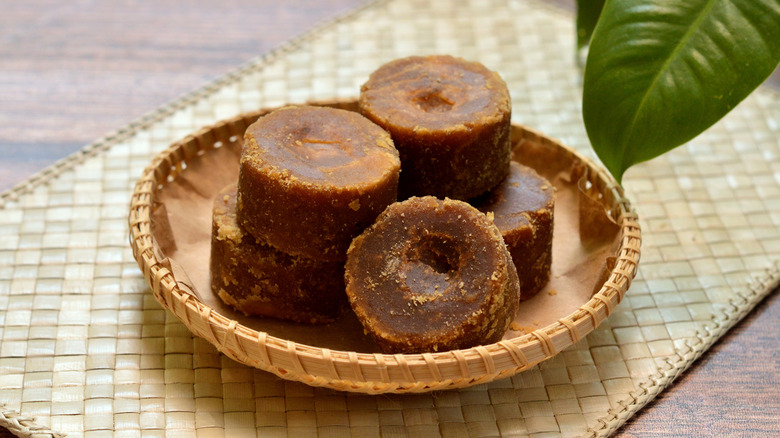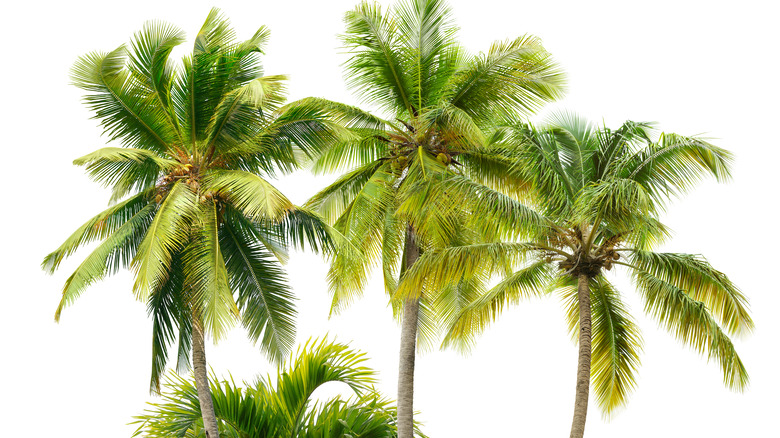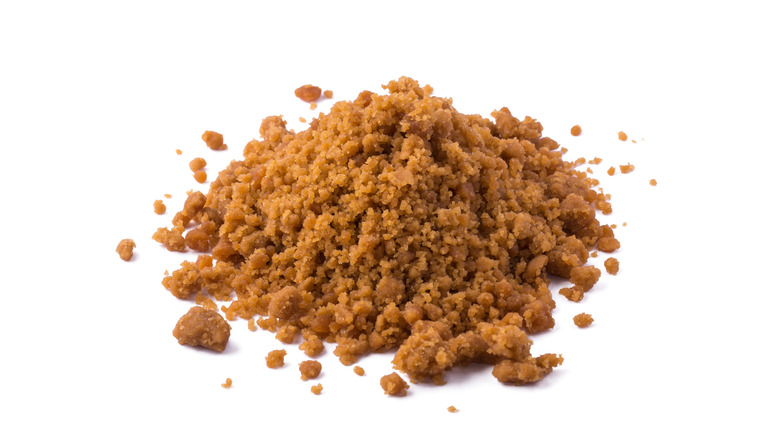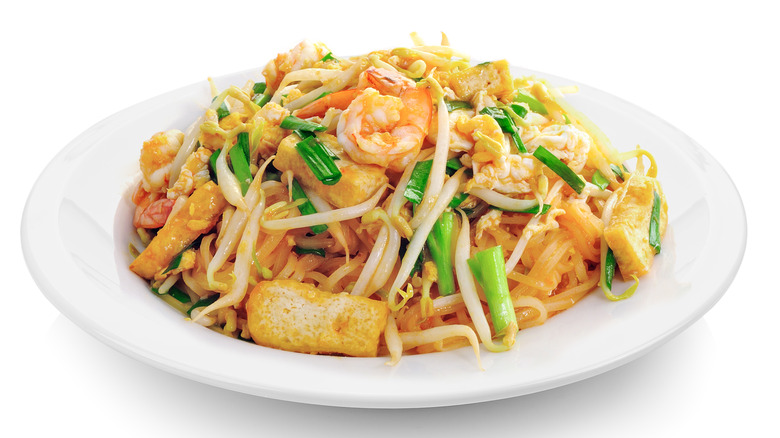What Makes Palm Sugar Unique?
Have you ever seen palm sugar in the sugar aisle of your local grocery store and wondered what it is? It's tan to light brown in color, and is sometimes sold in the form of a solid cone or brick shape, though it is becoming more common to see palm sugar sold in bags of granules.
One of the main reasons folks seek out palm sugar is that it's much lower than conventional refined white sugar on the glycemic index, which HealthLine says is a way to measure how foods will affect blood sugar levels. According to registered dietitian Sharon Palmer, palm sugar's glycemic index is 35, while traditional white sugar has a glycemic index of 68. Aside from this, there are several things that make it similar to and different from other sugars, syrups, and sweeteners, but let's start with how we get palm sugar in the first place.
How it's made
Palm sugar is made from the sap found in palm flowers, which are found on a variety of palm trees. As reported by The Spruce Eats, the process of making palm sugar is a labor-intensive affair that is similar to how maple syrup is made. Maple syrup is made by tapping a Maple tree for its syrup and then that syrup is collected, then boiled and filtered, according to Vermont Maple.
While palm sugar is also made from a sap, you don't need to tap a tree to find it. Instead, the sap for palm sugar is found in palm flowers, which is boiled until its reduced and transformed into a usable form, as detailed by The Spruce Eats. Per Delighted Cooking, the sap is collected when the buds of palm flowers are cut open, revealing the sweet liquid found inside, which is then boiled until excess moisture evaporates and the sap hardens to form palm sugar.
What does palm sugar taste like?
Delighted Cooking says palm sugar can also go by other names, such as coconut sugar and palm honey, so if you see these items on a grocery store shelf, don't get confused. Although it goes by a couple of different names, the flavor of palm sugar is reminiscent of another sweetener, brown sugar. As detailed by The City Cook, palm sugar not only looks like brown sugar thanks to its caramel hue, but it also has a slightly mild, less sweet flavor that is similar to the raw molasses product.
The rich, slightly nutty flavor of palm sugar makes it a flavorful yet lower glycemic index option for including in baking recipes like cookies, cakes, candies, or sweet breads. If you've ever tried the flavor combination of traditional brown sugar and pecans, then you know these two items pair well together. And mixing palm sugar and pecans, such as in the New York Times' recipe for palm sugar pecan pie, can be a delicious way to incorporate this sweetener into your everyday baking. But that isn't the only way to incorporate this special sugar.
Cooking with palm sugar
Palm sugar is also the go-to sweetener in many Southeast Asian cuisines, such as Indian, Vietnamese, and Thai dishes, since it's harvested in palm trees found in those areas of the world. The subtle sweetness and rich, caramel color make it a great option for including in traditional pad Thai, as detailed by Hot Thai Kitchen. Its sweetness can also nicely balance strong dishes like gujerati dahl or pungent sauces like fish sauce (via SBS).
And beyond using it in Southeast Asian cuisine, if you want to use it as a natural alternative to sugar substitutes, palm sugar is unique in that it can be replaced in baking or cooking at a 1:1 ratio, as noted by The City Cook. And SBS says you can even use it in the region's tea's such as a ginger and (as it's known in India) jaggery recipe. Now that you know more about palm sugar, its benefits and uses, it's worth incorporating it into your recipes to experience the flavor of this alternative to white sugar or other sweeteners.



